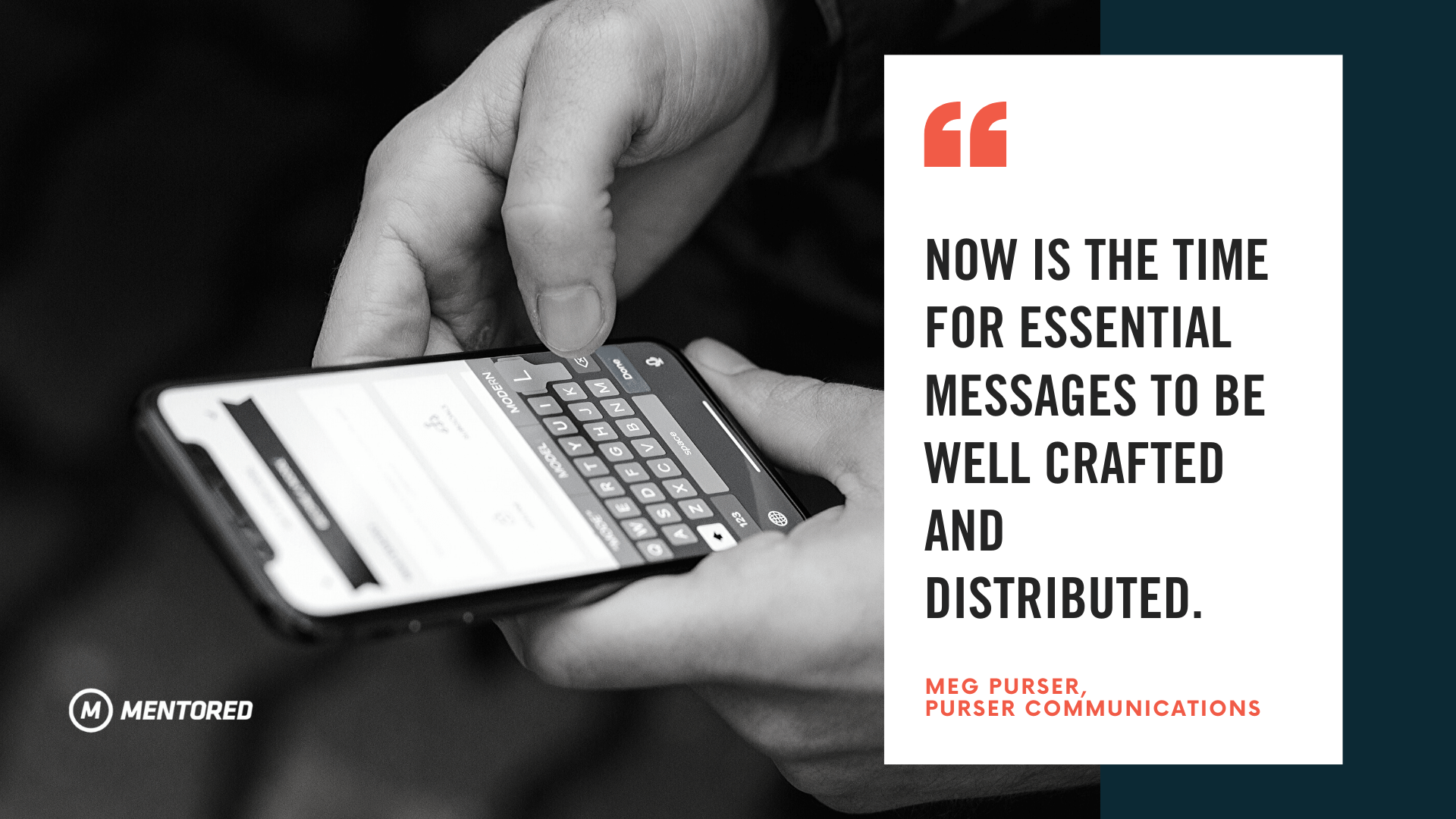
In the past three decades, I have worked through some of my clients’ toughest times and without a doubt this situation is unprecedented.
How to communicate the right messages in a time of crisis – by Meg Purser, from Purser Communications.
It is not uncommon when a crisis arises that the reaction of many businesses is to hunker down and hope that somehow it will all go away.
It is equally not uncommon that businesses that generally have professional communicators in-house or on contract realise very quickly that hunkering down is not the answer.
Crises are inevitable threats to business sustainability, to employment, to income, to lifestyle and much more.
The severity and global nature of this crises is as much a threat to small business as it is to international corporations. In the past three decades, I have worked through some of my clients’ toughest times and without a doubt this situation is unprecedented.
What is also uncommon is what business and the wider community is facing daily.
In the past few days:
- A porta-loo in the hamlet of Nelson Bay has been destroyed causing hundreds of dollars of damage to the builder who hired it. The perpetrator got away with a couple of toilet rolls.
- An experienced medical professional told a local hairdresser while happily having a ‘new do’ done, that they must deal with reality. That “reality” was that if two women arrived with the virus, the older, more frail woman would not be the one that they could save.
- A car broking services that specialises in helping people buy cars without leaving their home or workplace , has withdrawn its promotions and communication budget fearing a fall in trades.
- Shops have been stripped of freezers, webcams and dried pasta and let’s not talk about toilet rolls.
None of these things are rational, logical, sensible or common.
I have a saying in my business that ‘ you can’t fox the truth.’ In other words, you can’t go into places you shouldn’t, take things you oughtn’t, or say things that are misleading or incorrect.
What business must do is address the crisis and communicate.
Australia’s Prime Minister, and many thousands of others, can’t even shame people into being practical. Why? Because we have been exposed not to a virus, but to a world that has succumbed to poor communication.
A few weeks ago, I was at a luncheon where one of Australia’s media personalities spoke to about 250 professional people about their career. As a trained communicator I asked this trained journalist what their take on the demise of media underlined by the announcement of the closure of AAP. The answer was “it’s devastating”.
What is devastating is that our community does not value the importance of communicating the truth.
I was talking to our team of graduate consultants about the fact that the evolution of technology continues to gift our industry with new channels to help us communicate. These are not new audiences, they are simply new platforms or tools and like all things in our world, tools are only as good as the person who uses them.
If I had answered my own question to the journalist, I would have spoken about the role of professional trained and skilled communicators and the opportunities therein to effectively engage with our target audiences.
About 93% of Australia’s businesses are small. They are agile and innovative, they are generally collaborative, focussed on their customers and they employ about five million of us… and they are under the biggest threat to their existence in this nation’s history.
Now is the time for essential messages to be well crafted and distributed.
This does not mean that we need to be providing thesis length prose that are clogging our emails, social media platforms and media channels. It means that we need to start putting our audiences at the centre of what we are doing. It’s PR 101 – who is your who? Now, start thinking about what information they need?
Perhaps the communicator’s greatest strength is that she or he is trained and experienced in remaining objective about the crises, the challenge and the opportunity. Yes, they will recognise the threat to another’s business but solutions cannot evolve or be developed if the threat is not faced.
What would have been the appropriate message to the hairdresser, to the person who destroyed a locked porta loo, to shoppers who are hoarding goods? Can their levels of panic been lessoned if they had been provided better communication? Sadly, this a moot point now because we seem to have moved well past sanity.
So what next?
Not everyone with a keyboard is a communicator or journalist.
I won’t comment on the validity of my current fee structure of that of Australian trades, but I make it no secret that I have saved the reputation of a client for less than its costs people to renovate a small bathroom.
When considering what resources you need to get through this challenge, don’t take out the communication. Please use people that are skilled to be able to craft messages that can help you now and when it’s time to recover.
As in all crises first comes the impact, then rescue, followed by recovery and finally revitalisation. Each need its own set of messages and tools to make them effective.
Meg Purser is the Managing Director of a Newcastle-based strategic communication and public relations consultancy, Purser Communications, who has more than 30 years’ experience in issue and crisis communication management.
Post